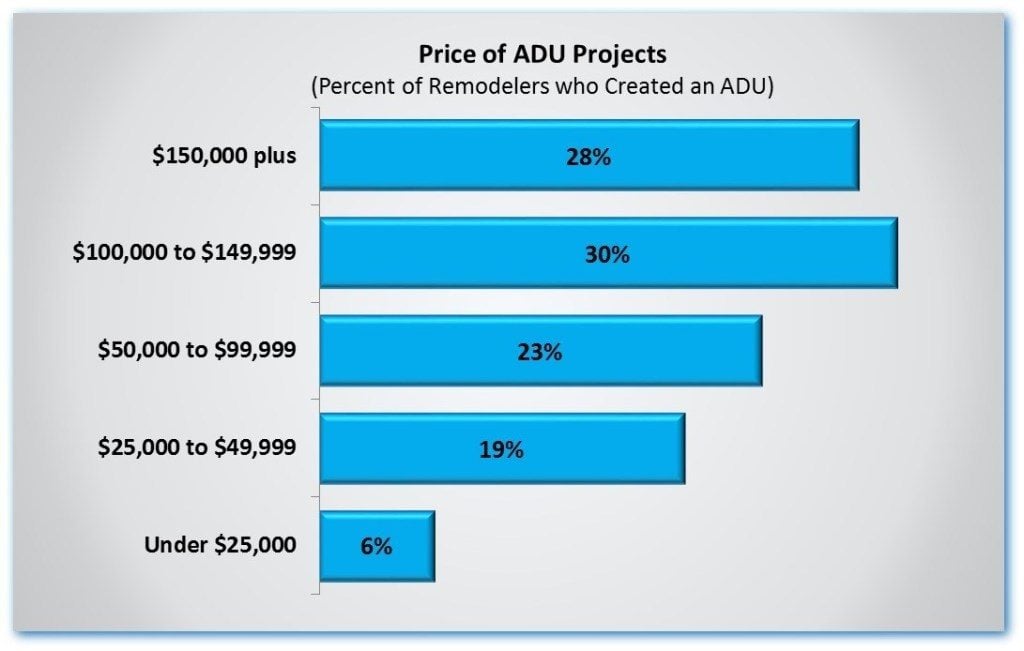Homeowners are showing a growing interest in adding so-called “granny flats”, or accessory dwelling units, to their homes, according to a National Association of Home Builders survey of remodeling contractors.

The survey shows that around a fifth of home improvement firms have taken on contracts to add an ADU to people’s homes, either by building an extension to the property or converting an existing space.
ADUs are small but separate living units that are added to an existing property, but they can be expensive to build. According to the survey, just 6% of builders reported completing an ADU project for less than $25,000, with more than 75% saying such projects cost at least $50,000. Another 28% reported projects of at least $150,000.
In most cases adding an ADU requires obtaining a building permit, though some local and state ordinances don’t require this. Other areas won’t allow ADUs at all, however. Currently, there are no federal rules governing ADUs.
But ADUs are growing in popularity, and some experts in the housing industry say they could well be a great solution for areas with low housing inventories, prompting some cities to explore new programs to help make them easier and cheaper to build.
Last year for example, Fannie Mae selected an ADU program in Denver as one of its top three “innovative ideas” to tackle housing shortages. The program enables city officials and community development nonprofits to work together to educate low-income homeowners about how to build ADUs that they can then rent out to earn extra money. low-income homeowners about how to build ADUs that they can then rent out to earn extra money.